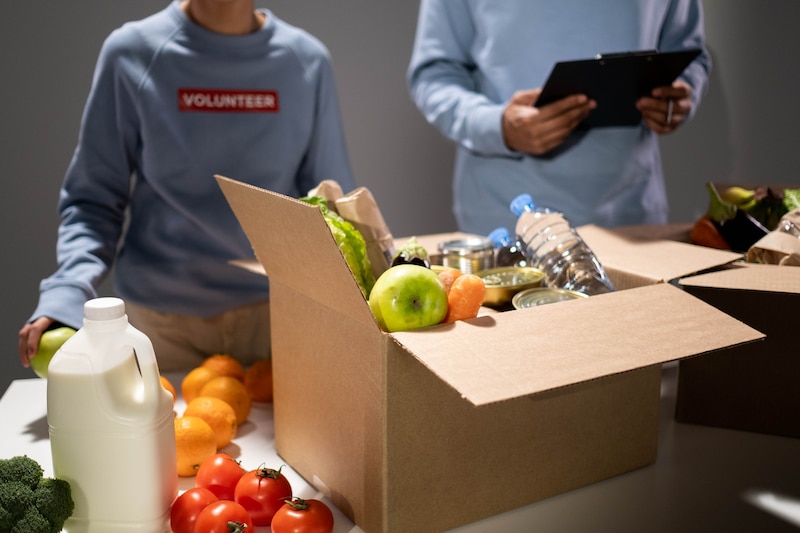Article written by Matt Gonzales.
Although COVID-19 disrupted Jalan Drummond’s freshman year at Jackson State University, he has no complaints.
“Everything is great, actually,” he says. His sunny disposition is rooted in an earnest desire to do good in the world. In fact, his habit of giving back has likely positioned him for success as an adult.
A growing body of developmental research suggests that adolescents have a fundamental need to contribute. When that need is properly met, it drives fulfillment of other key developmental needs — chiefly autonomy, identity, and intimacy — that help prepare teens for adulthood.
A bio/premed major, Drummond grew up in the small town of Lafayette, Ala., where the median income is $18,000. Lafayette is famous as the birthplace of boxing great Joe Louis, and many students at Lafayette High School continue to view sports as a primary path to success.
“When I was in high school I’d ask people, ‘What do you want to major in at college?’” Drummond recalls. “They would say, ‘football.’”
Precious White-Jordan, a special education teacher at Lafayette High School, says the residents of the old mill town have struggled to adapt to the post-industrial economy. The jobs that supported the community for decades have mostly dried up, but some students still don’t see a need to further their education.
“We’re fighting that attitude, even though a lot of the mills are closed,” White-Jordan says.
Drummond is different: an “anomaly,” according to White-Jordan. But why? He enjoyed no special privileges growing up. He was raised by a single mother, with his grandmother pitching in when his mom was busy with work or nursing school. What influenced Drummond to pursue education with such zeal in contrast to many of his peers?
There is no pat answer to the question. But, looking at Drummond’s life more closely, key themes emerge that may help explain his maturity and drive — including his lifetime priority of contributing to his community.
‘It’s not just empathy’
UCLA psychology professor Andrew Fuligni has been studying adolescent development in the context of family relations for years. It was while working with immigrant families that he recognized the outsized role adolescents play in Latin American and Asian families, as they may take care of siblings, cook, clean, and more.
“What was striking was that this role was very important in giving these adolescents a sense of who they are,” Fuligni says. This led him to take a deeper look at the role of contribution in adolescent development.
Fuligni explains contribution as “making a difference by giving support, resources, or assistance to a social group, or helping that group accomplish a goal.” While contribution can take the shape of prosocial activities like community service projects or volunteering, it isn’t necessarily limited to them.

“It’s not just empathy,” he says. “And it’s not just helping someone in need. It’s basically doing something to affect other people.” In fact, he says if adolescents aren’t given opportunities to make positive contributions, they may fulfill the need in unproductive and even harmful ways.
“If we don’t give them developmentally positive ways to contribute, they’re going to find ways to do it,” he continued. “And those may not be conducive to their health, or to the health and safety of others.”
Appreciating the adolescent brain
While a desire to contribute isn’t unique to adolescents, Fuligni says it reaches new heights after the onset of puberty.
“Neural networks are developing during the adolescent years that are involved in contributing to others, whether it’s heightened sensitivity to social rewards or it’s thinking about others and what they need or don’t need.”
While it’s common to think of the adolescent brain as impulsive or risky, much of the brain development during those years supports exploratory learning and cognitive flexibility.
“Adolescents are really trying to figure out what it takes to have an adult role,” Fuligni says. “And they need opportunities to make a difference. But it has to be authentic. It has to be real.”
Giving adolescents opportunities to contribute can be startlingly simple. It can begin with giving them a say in what’s for dinner, or what activities will be pursued in the classroom. And contribution can extend beyond the home or classroom, from community service and extracurricular activities to employment and even team sports. To maximize the benefits of these activities, Fuligni says educators and parents should encourage adolescents to reflect on the importance of their contributions.
“That’s the kicker,” he says. “When they can think about what it meant to engage in that volunteer activity, or to help a friend who was in trouble, or help their parents cook dinner because they had to work late, it’s that kind of reflection that enables them to get the psychological goodies that come from helping others.”
A family affair
For Drummond, being a contributing member of his family was passed down from his grandmother.
“A Black grandmother in a Baptist church in the South wants to help everybody,” he says. “She was always feeding people, praying for them, doing whatever she could for them.”
Furthermore, when Drummond’s mom would come home from her nursing job, she would talk to him about the challenges her patients faced and the obstacles they’d overcome. While these conversations influence his decision to study medicine, they also triggered a desire to help others.
From his sophomore year onward, Drummond volunteered at the hospital in neighboring Opelika, Ala. He helped out at the local daycare, which was chronically understaffed. He spent time in senior care facilities, where he helped cheer up lonely residents during the holidays.
As a high school junior, Drummond learned about the Bezos Scholar Program, which selects 17 high school juniors and seniors from around the United States and Africa and empowers them to create community change projects in their home towns. He saw an opportunity to make an impact at Lafayette High School, where drop-out rates are an ongoing challenge. He enlisted White-Jordan as his educator and project advisor, and together they completed the application and mailed it off.
“We were a little hesitant, because we’re from a small, rural community,” he said. Nevertheless, Drummond and White-Jones were selected as Bezos Scholars. As a part of the year-long leadership training experience, they went on to create a transition program aimed at helping incoming freshmen successfully adjust to life in high school.
While COVID delayed their plans to launch the program in person, they created a virtual version that incoming students at Lafayette will experience next fall. Most important, the program “sparked a real conversation” about the freshman transition process at Lafayette High School.
“People are ready to jump on board,” White-Jordan says.
Meanwhile, Drummond is already thinking about other ways to lift up the town of Lafayette.
“I used to think if someone just threw a check at Lafayette High School, everything would be okay,” he says. “But now I realize that monetary donations aren’t everything. You need people who are willing to come back and put in some hard work to help people realize what success means, and how important education is.”
Certainly, creating opportunities for contribution isn’t a cure-all for the problem of adolescent motivation. But recognizing it as a fundamental need of adolescent development is an important first step, according to Fuligni.
“It won’t act as a shield from all the slings and arrows of life,” he says. “But it will be a source of fuel to keep going in the face of challenges, and to show up for the people who appreciate you and who are counting on you.”
Matt Gonzales is an Indianapolis-based writer and co-founder at Matinee Creative.
Chalkbeat’s editorial staff had no role in writing or preparing this paid content. Learn about our sponsored content policy.


